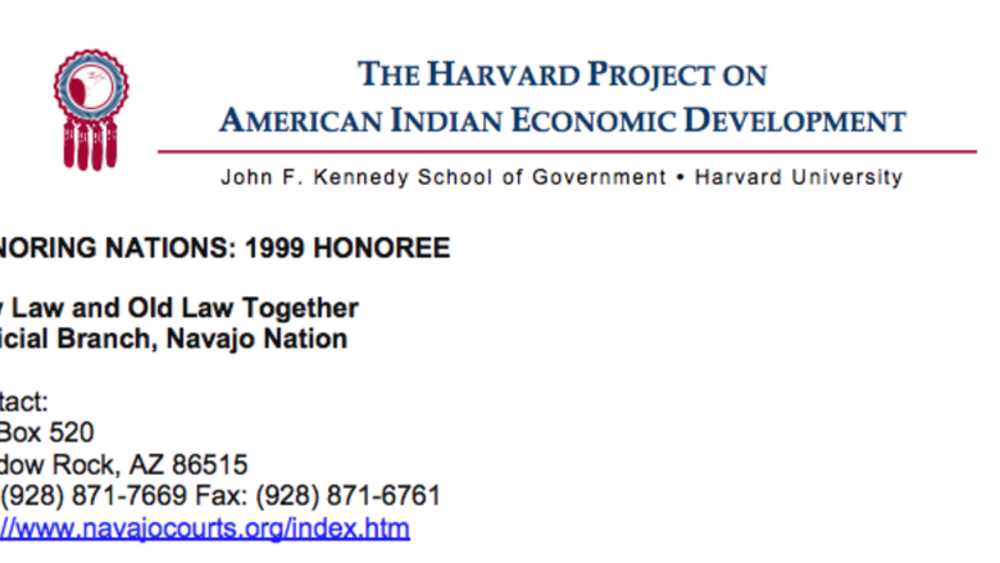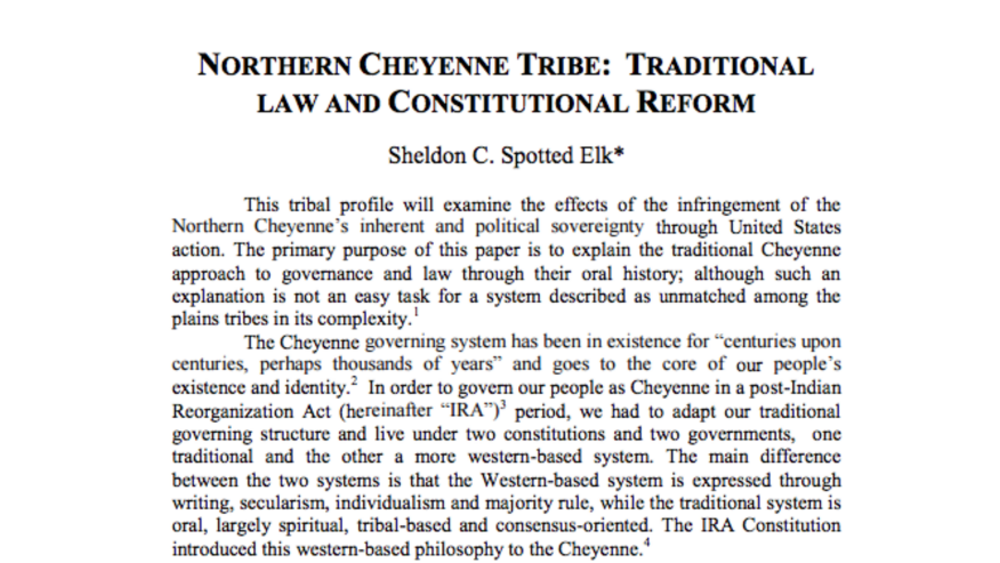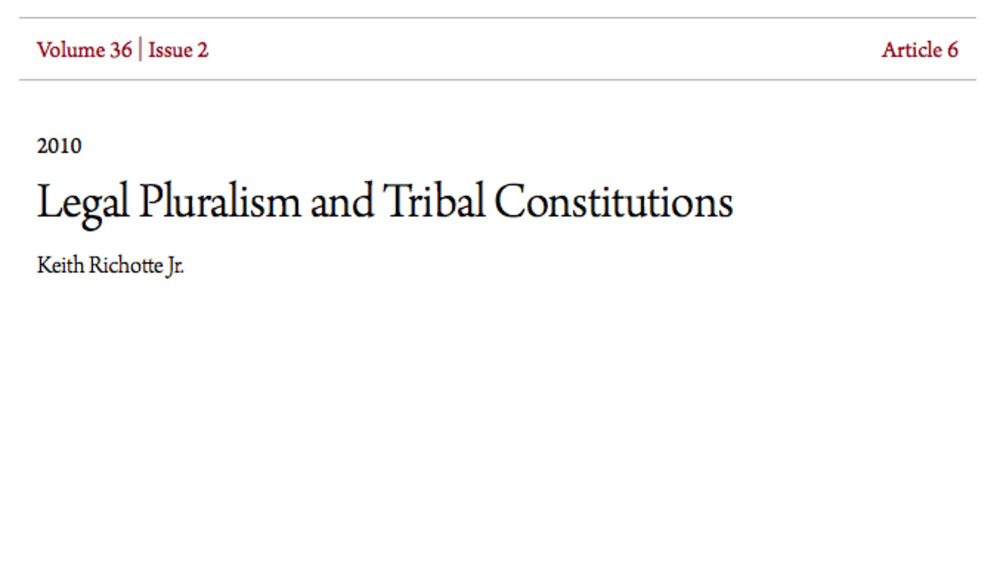In this highlight from the presentation "Key Things a Constitution Should Address: 'How Do We Make Law?'," NNI's Miriam Jorgensen explains how a growing number of Native nations are creating space for court-made law and judicial review of legislative and executive actions in their redesigned constitutions.
Additional Information
Jorgensen, Miriam. "Constitutions: Creating Space for Court-Made Law and Judicial Review (Presentation Highlight)." Tribal Constitutions seminar. Native Nations Institute for Leadership, Management and Policy, University of Arizona. Tucson, Arizona. April 3, 2013. Presentation highlight.
Transcript
"Now here's an example of case law that we're more used to, and I think one of the things that's fascinating about this is...how many of your nations actually publish tribal court decisions? If you're Navajo put your hand in the air because your court does. And that comes from the Navajo Supreme Court and Appeals Court, all of their decisions are published and you can find them online and they're searchable and an increasing number of tribes are doing this. It's definitely expensive, so you need a little bit more sort of wherewithal to do it, but it really makes clear to the community what the law sort of being clarified by your courts is. And so here's another source of law, judge-made clarified law, the sort of case law that's out there too. So it's not just statutory law that you might be thinking of, but constitutions provide the space for other lawmaking bodies and courts become one of them. One really important kind of court-made law is the law of judicial review. So far I've been careful to say courts may clarify law by applying it. That's what those previous examples were about. But some constitutions, again, the constitutions that you guys are probably working to write, increasingly tribal constitutions are including this thing called judicial review, which isn't just can I apply this law? It's, did the council get the law wrong? Is this law actually unconstitutional? Can I actually take it off the books? So there's that negation of law that if your constitution allows that sort of judicial review, your courts can do as well. So that's something to consider about law making as well."



